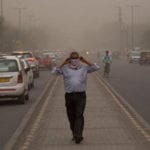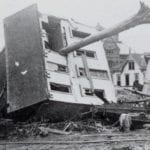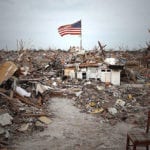 Weird Stuff
Weird Stuff  Weird Stuff
Weird Stuff  Mysteries
Mysteries 10 Tragic Disappearances and Deaths in Joshua Tree National Park
 History
History 10 Ways Childhood Really Sucked in the Old West
 Music
Music 10 Name Origins of Famous Bands from the 1990s
 Religion
Religion 10 Biggest Turnarounds by the Catholic Church
 Weird Stuff
Weird Stuff 10 Unbelievable Times Laws Had Unintended Consequences
 Humans
Humans Ten Historic Women Who Deserve Way More Credit Than They Got
 Movies and TV
Movies and TV 10 Films That Spawned Major Lawsuits
 History
History Ten Times Towns Were Wiped Off the Face of the Earth
 Creepy
Creepy 10 of the Most Disturbingly Haunted Public Houses in the UK
 Weird Stuff
Weird Stuff 10 Niche Subcultures That Are More Popular Than You Might Think
 Mysteries
Mysteries 10 Tragic Disappearances and Deaths in Joshua Tree National Park
 History
History 10 Ways Childhood Really Sucked in the Old West
Who's Behind Listverse?

Jamie Frater
Head Editor
Jamie founded Listverse due to an insatiable desire to share fascinating, obscure, and bizarre facts. He has been a guest speaker on numerous national radio and television stations and is a five time published author.
More About Us Music
Music 10 Name Origins of Famous Bands from the 1990s
 Religion
Religion 10 Biggest Turnarounds by the Catholic Church
 Weird Stuff
Weird Stuff 10 Unbelievable Times Laws Had Unintended Consequences
 Humans
Humans Ten Historic Women Who Deserve Way More Credit Than They Got
 Movies and TV
Movies and TV 10 Films That Spawned Major Lawsuits
 History
History Ten Times Towns Were Wiped Off the Face of the Earth
 Creepy
Creepy 10 of the Most Disturbingly Haunted Public Houses in the UK
10 Deadliest Nuclear Disasters
Since World War II, great atomic discoveries have been made when it comes to renewable energy. From nuclear power plants to aircraft carriers that only need to refuel every 22 years, nuclear energy was once widely believed to be the future of powering the world. Under the right conditions, atomic energy is very safe and can provide energy to millions of people for years.
But nothing is perfect, and many are unaware that a form of science that was supposed to make the world a better place has been a nightmare for some. Over the years, many people’s lives have been claimed by unfortunate accidents involving nuclear power.
10 Texas City Disaster
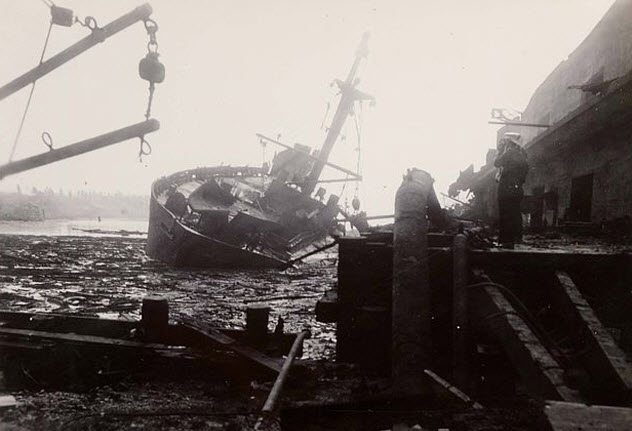
On April 16, 1947, the worst harbor explosion in US history occurred. A French cargo vessel named the Grandcamp was carrying a load of ammonium nitrate, which is commonly used in fertilizer and in explosives for atomic weapons.
A lit cigarette left by one of the dock workers had sparked a fire on the loading dock. It spread quickly into one of the Grandcamp’s cargo holds and ignited the ammonium nitrate.
The ship’s captain had ordered her hatches closed to contain the fire, but the rise in temperature only created better conditions for the volatile chemical to explode. The High Flyer, a nearby vessel which was carrying sulfur, was also damaged and exploded a day later due to fires from the Grandcamp‘s initial explosion.
Poisonous gas quickly filled the air over the city. Unfortunately, there was also a phone operator strike at the time, making emergency teams unable to respond to local residents affected by the toxins in the air. Over 500 people were killed in this incident, including a fire chief and 27 of the 28 firefighters who responded to the dock fire.
As a result, new safety measures were put in place to ensure that ammonium nitrate is transported safely. Docks now have a central response system to react quickly to dockside emergencies, and shipping companies are now required to use specially sealed containers and store the chemicals away from other hazardous materials.
9 Titan II Missile Fire
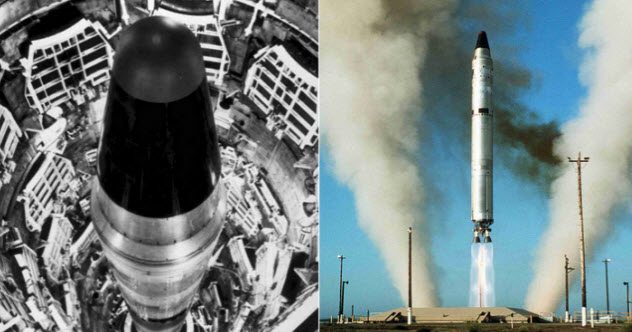
The Titan II missile fire took place near the town of Damascus, Arkansas, on September 18, 1980. It resulted from a repair crew member dropping a 4-kilogram (9 lb) socket from the missile platform and puncturing the lower fuel tank of the missile.
Airman David Powell disobeyed a technical order given by the US Air Force to use a torque wrench instead of the previously used ratchet when carrying out a repair. Once the airmen observed the fuel vapor leaking into the silo, all silo crew members evacuated to the surface.
Dave Livingston and Jeffrey Kennedy, two expert repair members, were called to the silo to inspect the damage to the missile. They entered the silo and found that the oxidizer tank was quickly losing pressure.
The two men returned to the surface and opened the silo to vent the gas. Minutes after they arrived, the silo exploded, sending the warhead of the missile flying into the air.
After a day’s search, the 12-kiloton bomb was found in a ditch several hundred yards from the site and collected by the US military. The missile itself was the largest nuclear weapon in the US arsenal and would have resulted in a blast 600 times larger than that in Hiroshima. Airman Livingston was hurt in the blast and died after being transported to a nearby hospital. Another 21 people were also injured.
Airman David Powell was later discharged for disobeying a mandated protocol. To this day, he does not believe that he was responsible for the incident. The government would later announce that the event had occurred due to human error.
8 Palomares Hydrogen Bomb Incident
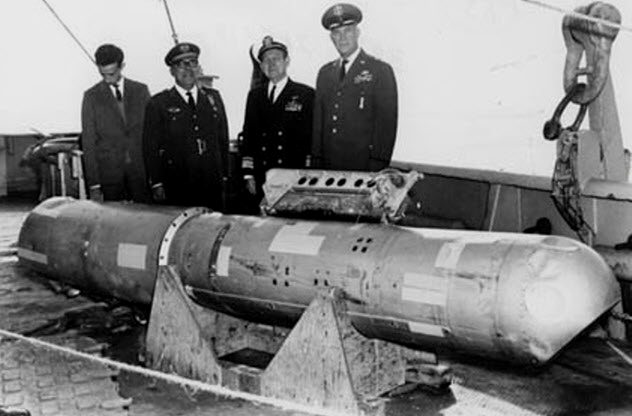
On January 17, 1966, 12 B-52 bombers were carrying hydrogen bombs to Allied countries in Europe as part of a military exercise known as Operation Chrome Dome. The purpose was to prepare for a first strike opportunity against the Soviets during the Cold War.
One of the bombers collided with a KC-135 tanker that was trying to refuel in the air over the southern coast of Spain. The accident drenched the two planes in fuel, which ignited and caused a midair explosion. Although a few men were able to parachute to the ground safely, seven others were killed in the explosion. The wreckage from the two planes fell on Palomares, a seaside farming village in southern Spain.
The local population was not aware that the wreckage was spreading radioactive plutonium across the area, contaminating the land and water supplies around the town. Three of the bombs were immediately recovered. The fourth was not found until three months later on April 7, 1966.
This was the first time that the US military had shown the public a nuclear weapon. Testing of the population revealed few traces of radiation, and cancer rates were similar to those in other towns in the area. Since the discovery of contamination in the soil in 2006, the US government has agreed to help Spain with the recovery process, which was unresolved at the time.
7 Kyshtym Nuclear Incident
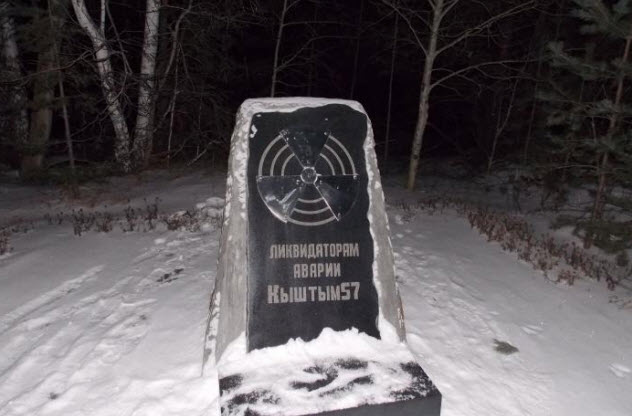
Kyshtym is ranked as the third-largest nuclear disaster that ever occurred. It happened in the town of Mayak in the Ural Mountains of the Soviet Union on September 29, 1957, at the height of the Cold War.
The Mayak plant was used to manufacture six materials essential for the development of weapons-grade plutonium. At the time, the Soviets had not made any of their workers aware of the serious possibility of radiation poisoning from radioactive materials.
Back then, the plant used local inmates as a labor force to dispose of waste by dumping it into the Techa River. Nearby residents were not aware of the contamination until a local man suffered serious radiation burns from it and had to have his legs amputated as a result.
The thyroid cancer rate in this region is now three times higher than comparable areas. To this day, the people there still suffer from birth defects, radiation burns, and seven rare forms of cancer not seen in the national population.
Soviet ignorance continued for years following the initial contamination, and Russian regulating bodies failed to service the plant or protect the civilian population. Technicians at the plant didn’t notice a structural failure in one of the cooling systems, which caused a chain reaction.
On September 29, 1957, the cooling problem resulted in a massive explosion in one of the radioactive waste tanks. The explosion spread radioactive material across an area with a population of almost 300,000 people.
Soviet authorities only evacuated 10,000 ethnic Russians from the area. The government left the rest of the population there to test the effects of contamination. Declassified Russian documents later revealed that this was known as the Muslumov experiment.
The Russians never made the remaining population aware of the contamination. Many people in the area are still fighting to get relocated. As a result of political ignorance and human error, Mayak and the surrounding area is considered the most contaminated place on Earth.
6 Tokaimura Nuclear Accident
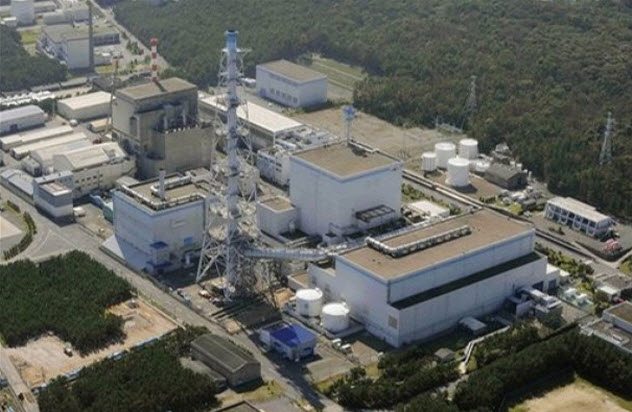
The Japan Nuclear Fuel Conversion Company established a processing plant near Tokaimura to produce enriched uranium for the plant’s nuclear reactor. Three technicians were assigned to prepare the fuel and fill the precipitation tank around the reactor.
The plant had not produced this type of fuel in three years, and the technicians had absolutely no qualifications to work on this assignment. This lack of knowledge and experience led to one of Japan’s worst industrial accidents.
The technicians were unknowingly overfilling the precipitation tank, which had a maximum capacity of 2.4 kilograms (5.3 lb). Leading up to the point of critical mass, the tank was filled with 16 kilograms (35 lb) of uranium at that time.
The materials began to have a negative reaction, producing a brief blue flash that immediately gave all three technicians a potentially lethal dose of radiation. It also spewed radioactive materials yttrium-94 and barium-140 into the air in the plant.
Two of the technicians responsible were killed from radiation burns and exposure to gamma radiation. The remaining crew in the plant managed to empty the tank and replace the cooling materials with boric acid, which brought the uranium to a subcritical level. While the Japanese authorities worked diligently to clean up the area, civilians there were evacuated for two days before it was safe for them to return.
5 Windscale Fire
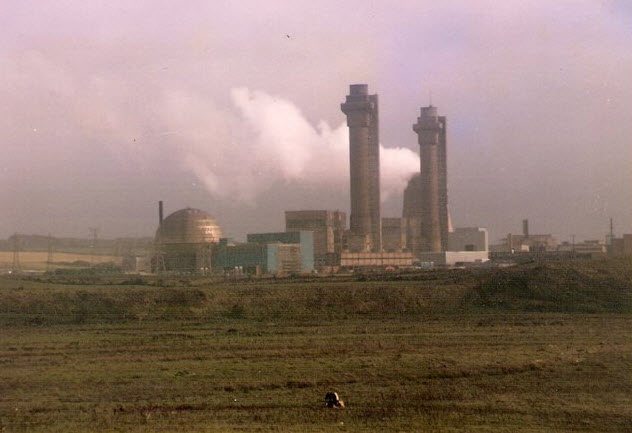
Europe’s most horrific nuclear disaster occurred on October 10, 1957, in Cumbria, United Kingdom. The Windscale facility used a system of nuclear reactors that were controlled with graphite. Each reactor was referred to as a “pile.”
Originally constructed between 1950 and 1951, the site was built to manufacture atomic weapons for the British government. On the morning of October 8, 1957, engineers at the plant noticed that one of the piles was cooling down and not meeting the proper operating temperature.
They used what was known as the Wigner cycle, which reused captured energy from the reactor to cool and heat the reactor. The test had appeared to be successful. But two days later, engineers noticed that the reactor temperature was once again incorrect and they decided to heat the reactor. They didn’t know that there was a fire in the Pile No. 1 reactor. By using a system that fanned oxygen into the reactor, they had just fed the fire.
The fire burned for another three days. Conventional methods like water could not be used as water oxidizes with radioactive materials and could have produced even greater damage to the structure.
Finally, engineers realized that the fire would lose its oxygen supply if they closed a hatch at the top of the Pile No. 1 chimney. This was done, and the fire was successfully stopped in 24 hours. No loss of life occurred.
However, it was later discovered that severe radioactive contamination had reached the UK mainland and a rise in thyroid cancer became apparent shortly afterward. Since the accident, the Pile No. 1 reactor has been permanently sealed and decommissioned, but the British government has determined that the plant will not be fully decommissioned until 2060.
4 Goldsboro B-52 Accident
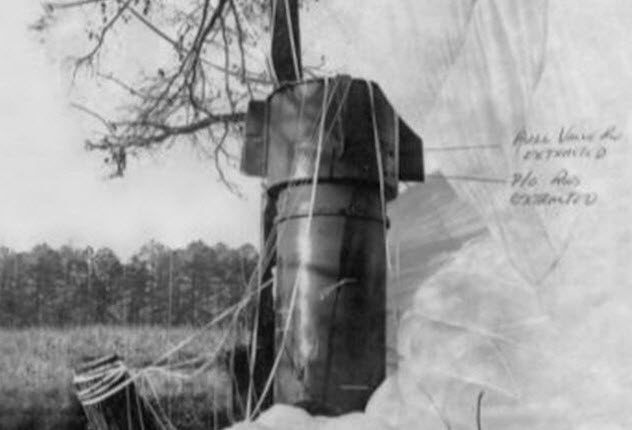
On January 24, 1961, a B-52 bomber carrying two 4-megaton, Mk 39 atomic bombs was ordered to refuel over the Seymour Johnson Air Force Base. The B-52 had rendezvoused with the aerial tanker over Goldsboro, North Carolina, just northeast of the base.
The crew of the tanker noticed that the B-52 was leaking fuel from its right wing, and the bomber was ordered to return to base. On approach to the airfield, a severe leak in the fuel tank caused serious mechanical failure, rendering the plane’s controls inoperable at 3,000 meters (10,000 ft).
Upon landing, the plane broke apart and sent the two bombs flying into the surrounding area. Three of the plane’s crew died as a result of the crash. The rest landed safely. The air force immediately sent out search parties to find the missing bombs.
Both bombs were recovered quickly. However, bomb technicians found that one bomb had completed three of the four stages in the weapon’s arming sequence. If not for the fact that these bombs had to be armed by the pilot in the aircraft before they were released, millions of lives would have been lost in a matter of seconds.
3 The Fukushima Daiichi Disaster
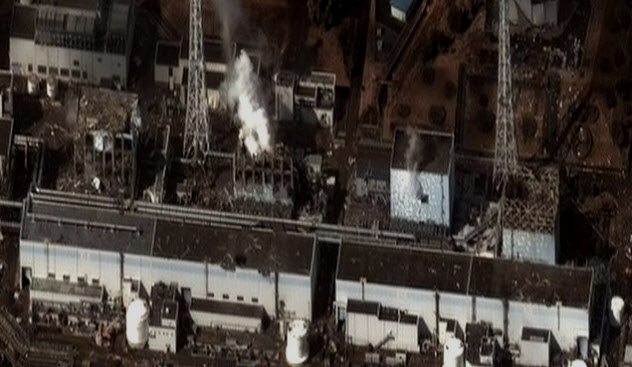
On March 11, 2011, an earthquake struck the coast of Japan. The tectonic movement from the initial quake triggered a tsunami that headed directly for the Fukushima Daiichi nuclear facility.
The massive wave, which was traveling at several hundred miles an hour, had caused extreme damage to the plant’s cooling and venting systems, which are integral to controlling the temperature in each reactor. This caused an immediate release of radioactivity into the local area.
After a month of assessing the damage to the local population, the Japanese government declared a 20-kilometer (12 mi) restricted zone on April 19, 2011. The residents were evacuated and relocated. The government ordered all six reactors to be decommissioned, and they were completely shut down one year later.
To this day, the area is extremely contaminated and radiation is still venting. The Japanese government has yet to find a solution.
2 Three Mile Island
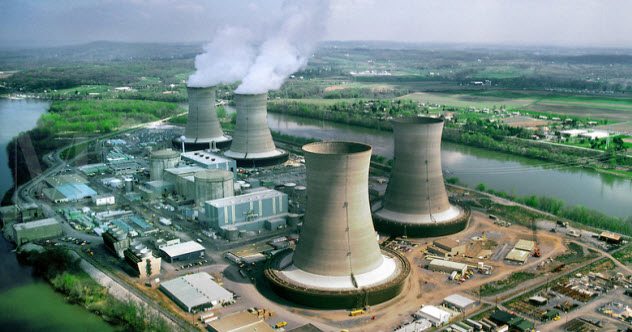
On March 28, 1979, one of the most terrifying nuclear disasters in US history took place at the Three Mile Island nuclear facility in Pennsylvania. Workers at the plant didn’t notice that a mechanical failure in the cooling system was causing a massive increase in the core temperature of the reactor.
Unfortunately, this facility did not have warning systems or sensors. Reactor workers had shut off the emergency inflow supply, thus providing no coolant to the reactor. It overheated, and half of its uranium core melted. Although there was a small release of radiation, it was not harmful to the local residents as it was equivalent to half the dose you get from an X-ray.
The threat posed by this plant to over two million people fueled the protests of antinuclear energy activists. On April 1, 1979, President Jimmy Carter inspected the plant to ensure that efforts were being made to prevent a similar accident.
Forty years later, Three Mile Island has operated without further incident. However, the plant is scheduled to be decommissioned in 2019 due to competitive costs from natural gas. Over 675 employees will lose their jobs.
1 Chernobyl Reactor Meltdown
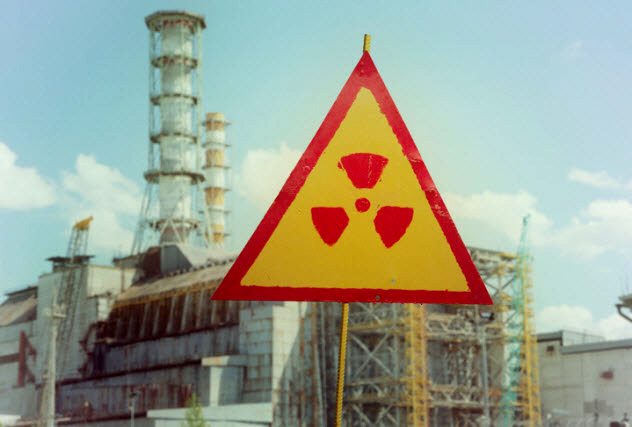
The worst nuclear disaster to affect the entire planet happened on April 26, 1986, at the Chernobyl nuclear facility near Pripyat in the Soviet Union. During what should have been a routine safety test, Chernobyl’s No. 4 reactor suffered a catastrophic meltdown.
The Soviet government had provided a detailed instruction list for the workers to follow to safely execute the test. But one of the shift supervisors decided to disregard the protocols and improperly sequenced the reactor core.
The intense heat from the core caused a massive steam explosion, blowing away nearly one-third of the building and releasing lethal amounts of radioactive material into the atmosphere above parts of Asia and Europe. Fire crews battled the flames and collected raw radioactive materials from around the site to avoid any further contamination.
To this day, there is still a molten pile of radioactive sludge beneath the core of the reactor. If you were to stand next to it for 30 seconds, you would get radiation burns. If you stayed more than four minutes, you would only have a few days left to live.
The firefighters who worked in the same areas as the sludge died of severe radiation burns in the local city of Pripyat. Their fire suits are still in the hospital basement, and the room they are kept in is one of the most irradiated locations in the exclusion zone. The Russian government sent in over 500,000 rescue workers to respond to the emergency. Thirty-one perished.
Pripyat’s population of 50,000 had to be evacuated, and people were only allowed to take valuable items. Nine months later, the Soviet government had the reactor sealed with a steel-and-concrete structure called “the sarcophagus.”
Although the area was deemed to be unlivable for the next 50,000 years, the Russian government did not shut down the facility until the early 2000s. Before then, they shuttled in workers from outside the exclusion zone.
Even today, it is difficult to determine the extent of the damage caused by the Chernobyl meltdown. But victims continue to be affected by higher-than-normal rates of thyroid cancer and birth defects. The city of Pripyat is a ghost town visited only by those given permission from the Russian government. In addition, a few residents were granted permission to live there in their old age.
I studied at Temple University in Physics and Finance. I research in both the areas of astrophysics and particle physics.
Read about more horrors of nuclear technology on 10 Dangerous Misconceptions About Nuclear Technology and 10 Brutal Realities Of Life After The Nuclear Apocalypse.
